Fighting Dust Allergies: Common Methods to Clean and Prevent Dust Accumulation at Home
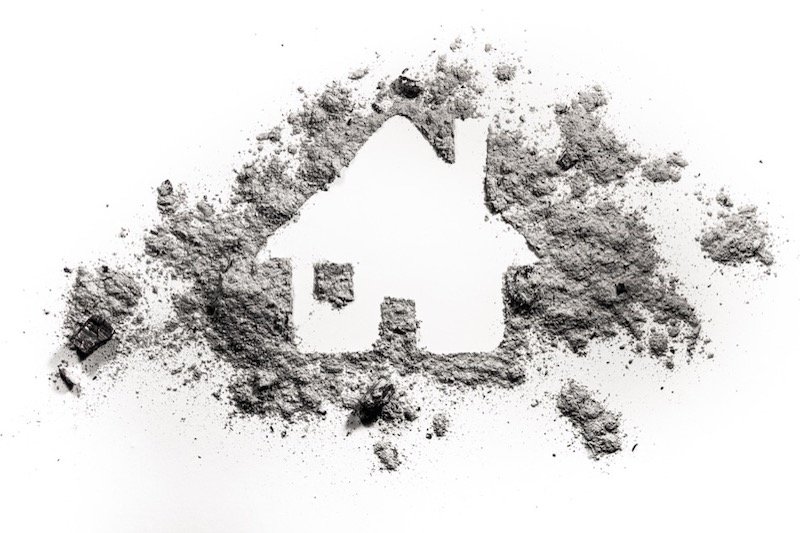 Did you know allergy symptoms can actually worsen after cleaning, vacuuming, and dusting? It seems like dusting and vacuuming should improve your allergy problem, but often these activities can exacerbate the issue. In other words, the time you're spending trying to make your allergies better can actually make them worse. The cleaning process causes dust particles to surface, making them easier to inhale.
Did you know allergy symptoms can actually worsen after cleaning, vacuuming, and dusting? It seems like dusting and vacuuming should improve your allergy problem, but often these activities can exacerbate the issue. In other words, the time you're spending trying to make your allergies better can actually make them worse. The cleaning process causes dust particles to surface, making them easier to inhale.
Dust can be found in all locations of the home. Keeping the dust build-up to a minimum, especially if you're affected by allergies, can improve your overall quality of life. There are many ways dust can be controlled. Decluttering, changing air filters, improving pet care practices and changing pillows are all examples of ways you can control dust in your home.
Overall, you may find controlling dust requires a change in lifestyle and behaviors at home. By changing the way you clean, the type of bedding you use, the way you interact with your pets and other lifestyle factors, you can reduce the amount of dust in your home.
This article will discuss the most effective methods for eliminating dust. You'll also learn where you can find the most dust in your home and how to reduce your dust allergies.
Table of Contents
Dust Allergies
A dust allergy is an allergic reaction to dust or dust mites found in the home. Dust mites are a type of insect that live in the household and eat dust. People who are allergic to dust are often allergic to these insects. Dust and dust mites can be found nearly everywhere in the home, including bedding, upholstery and carpeting. People who are allergic to dust and mites can control their symptoms by reducing the amount of dust in their home. Some people also take medication for this allergy.
Symptoms of Dust Allergies
If you suffer from a dust allergy, you may experience a variety of negative symptoms such as:
- Asthma
- Runny nose
- Itchy eyes
- Tightness in the chest
- Wheezing and coughing
- Postnasal drip
- Blue-colored skin under the eyes
- Difficulty breathing
Although dust allergies are not usually a serious condition, it can be if the affected person has a severe enough reaction. Conditions like asthma can be deadly for someone who goes untreated, or who does not have the tools to enable breathing when an attack occurs. Work with your doctor to ensure your dust mite allergy condition is properly treated.
Triggers
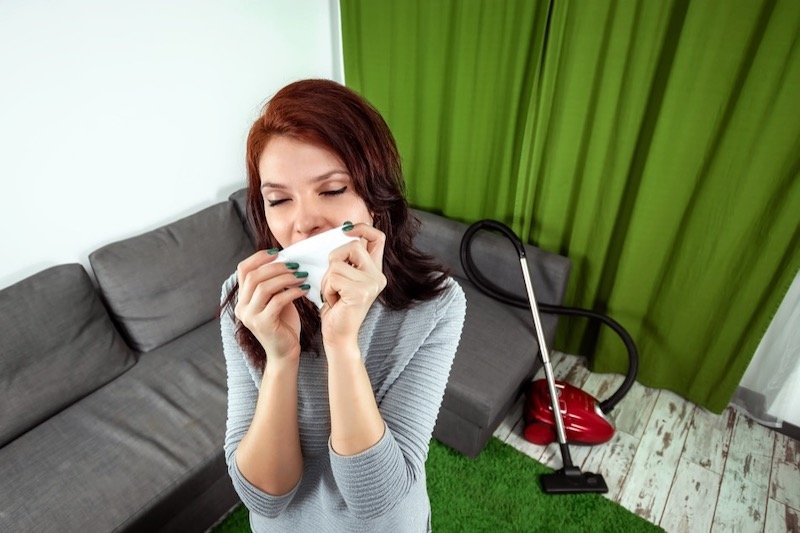
Allergy triggers can cause your allergies to become suddenly pronounced. Triggers can take many forms, depending on your particular allergy and how severe your allergy is.
Dust Mites
Dust mites are the most common reason people are allergic to dust. Mites thrive in conditions with temperatures over 70 degrees and in high humidity. You can find dust mites everywhere. They float in the air, live in upholstery and carpeting, can be found in curtains and bedding, and can even live in mattresses.
Mites are not visible to the naked eye. Even if a house looks clean, it could be infested with dust mites.
Pollen
While pollen originates outside, it can still enter the home through windows, screens, doors, and even on the bodies of people and animals who have spent time outside. Pollen is scattered through the air by plants. Different types of plants have different types of pollen. The type of pollen found in and around your home will depend on the types of plants found in your environment.
Most people are only allergic to certain types of pollen. If plants you're allergic to live in your area, you're likely to experience problems. If the plants that trigger your allergies are not in your town or neighborhood, you may not experience allergy symptoms until you go someplace where the particular pollen can be found.
Feathers, Animal Hair and Other Animal Particles
Animal hair and feathers are another common source of dust in the home. Pets shed their hair, dander (skin particles), saliva and urine throughout the house. When combined with dust, pet hair can create a variety of allergy problems. Feathers are similarly problematic for people who are allergic to birds. Typically, only one type of animal or bird will trigger allergies for the affected person.
Cockroaches
Cockroaches drop tiny particles (including feces) into the environment, which can cause an allergic reaction. Cockroaches can be found in any environment, but are most commonly found in urban areas. Presence of cockroaches in the home can negatively impact indoor air quality, especially in the areas of the home where the roaches spend time.
Mold
Mold produces fungus spores, which are then released into the air. Mold can be found in homes, especially in places like the bathroom or bedroom, and can be toxic. Homes with a lot of mold, or a lot of one kind of triggering mold, can cause problems for people with mold allergies. All homes have mold, but the homes with the biggest problems are those with humidity and moisture issues. Plumbing leaks, roof leaks and lack of air flow can all contribute to mold development in the home.
Management and Testing
Before you can manage your dust allergy, you must first diagnose the problem. This can be done with an allergist. To diagnose, the allergist will perform a skin test by pricking your skin with a variety of allergens, then the allergist will watch for a reaction from each type. If you have an allergy, your skin will turn red and itchy where it was pricked with allergens.
Once the diagnosis is made, your allergist may prescribe medications to help you manage your condition. However, you can also improve quality of life by reducing the amount of dust in your home.
Cleaning Tips to Reduce Household Dust
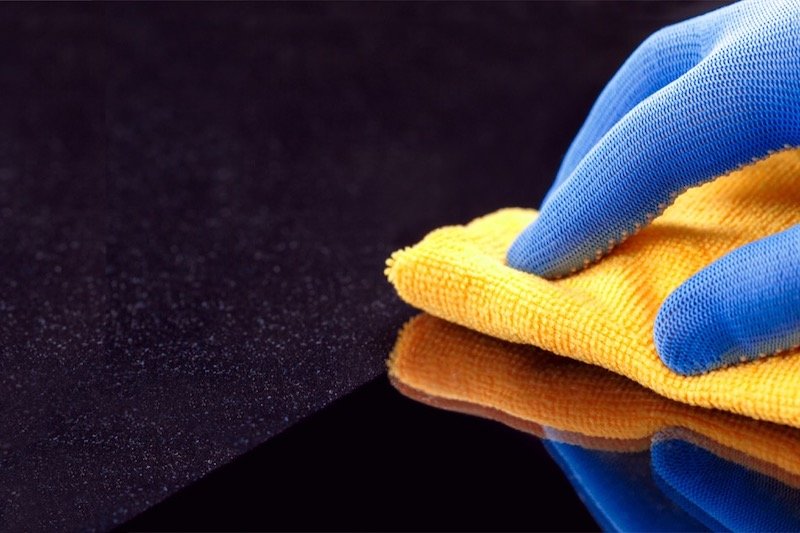
Cleaning to reduce dust can improve your indoor air quality while helping you to breathe easier at home. Dusting should be done at least once per week to be most effective. Most people dust with a commercial dust cleaner and a rag. This article will go more into details in a bit, but before covering dusting methods, it's first important to discuss some other ways you can reduce dust and improve the effectiveness of your cleaning habit.
Declutter Your Home
Decluttering is a long process and can take months. However, the results are well worth it. Clutter makes cleaning take longer and can often make cleaning efforts less effective. The more clutter in your home, the more difficult it will be to eliminate dust from your house.
Basic rules of decluttering include:
- Declutter regularly, on an ongoing basis.
- Get into a decluttering routine, eliminating clutter on the same days every week.
- Make a rule for eliminating clutter (for example, get rid of everything you haven't used in at least one year).
- Buy organizational bins.
Hold a Garage Sale
Hold a garage sale to get rid of a lot of clutter quickly. Keep your prices low to ensure people will buy what you're trying to sell. Give away to charity whatever is leftover at the end of the garage sale. Often, sheets, books, clothes and even cleaning supplies can be given to charities. What can't be given to charities may be able to be recycled. Some items, like paint cans and tires, must be recycled at special centers. Contact your local sanitation department to find out what to do with these items.
Avoid the Knick-Knacks
Knick-knacks are some of the most problematic forms of clutter. Knick-knacks make surfaces hard to clean, so many people will allow dust to build up for longer on those surfaces. If you must have knick-knacks, limit your use.
Create a System for Dealing with Mail
Mail is another one of the most problematic forms of clutter, because it can build up on surfaces like the kitchen table, cabinets, shelves and dressers. The more mail found around your house, the harder it is to keep furniture clean. Create a system for organizing mail. Keep all mail in one spot, and go through mail periodically to get rid of what is no longer needed.
Change Air Filters Regularly
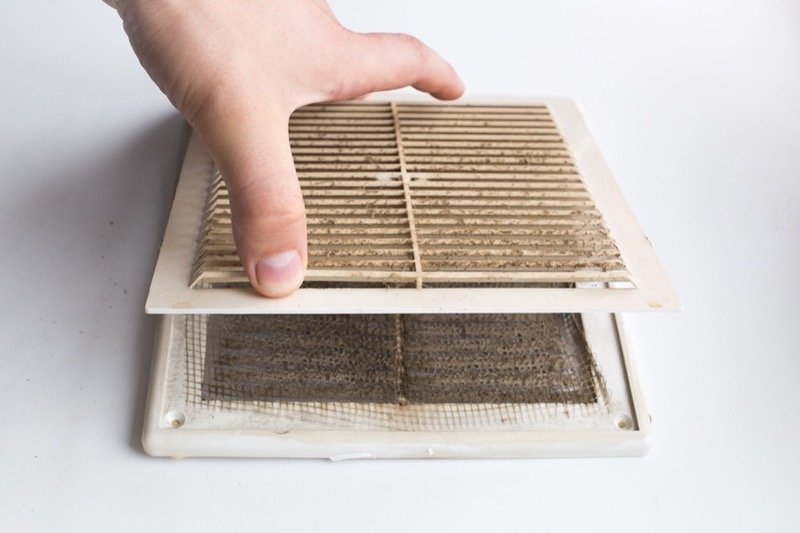
Forced-air HVAC systems rely on an air filter to clean the air flowing through the home's ducts. These air filters reduce the amount of dust flowing through the HVAC system, and also reduce the amount of dust in the home. HVAC air filters help extend the service life of the HVAC system and can also improve your home's indoor air quality.
Most HVAC systems have an easy-to-replace air filter, which fits in a slot between the blower and the return air duct. To replace the air filter, remove the old filter from its slot. Some air filters are protected by a door; other filters are not.
HVAC air filters can be found at home improvement centers and hardware stores. Take the current filter to the nearest retail location where filters are sold, and find a filter that matches the old one. If you suffer from allergies and would like to reduce the dust more thoroughly, use a HEPA filter. HEPA stands for High Efficiency Particulate Air. HEPA filters remove more than 99% of all particles in the air.
After purchasing the new air filter for your home, throw away the old filter and insert the new one into the slot. The EPA website recommends homeowners to replace their home's air filter every three months, whenever the HVAC system is in use. If you go for long periods of time without using your HVAC system, you may not need to replace your air filter as frequently. For homeowners who have sensitivities or allergies, replacing the HVAC filter more frequently could yield better results.
Consider HEPA Vacuum Cleaners
A HEPA vacuum cleaner uses a HEPA filter to eliminate particles as small as 0.3 microns in size. Standard vacuum cleaners only eliminate particles between 30 and 50 microns in size, so a HEPA vacuum is much more effective for allergy sufferers.
HEPA vacuums come in different types, including cannister vacuums, upright vacuums and built-in options. Cannister vacuums and upright vacuums are both portable. They have a design most homeowners are familiar with, and thus are often the preferred vacuum type for homeowners seeking a HEPA model.
Another type of HEPA vacuum is the built-in model. Built-in vacuums are installed in the house, with the motor mounted to a wall (typically in the garage or in a closet). The motor is then connected to each room of the house via pipes that run through the walls. To access the motor, the homeowner hooks up hoses to connections, which look similar to electrical outlets. The hoses must be transported from one room to another.
HEPA vacuum cleaners are designed to get rid of dust particles that have settled to the ground. This is important for dust elimination because if the dust is not removed from the floor, it will be stirred up again and again, causing airborne particles to be redistributed and breathed in.
When choosing a HEPA vacuum, consider the following:
- Weight. Big systems can be heavy and difficult to drag around.
- Sealed system. The best HEPA vacuums will be sealed with rubber gaskets to prevent particles from leaking into the air.
- Effectiveness. Read customer reviews to pick the best vacuum system in your price range.
- Attachments. Size and type of attachments are important for reaching difficult places.
Clean Your Pillows
Pillows can harbor a lot of dust. Laying your head on your pillows can send dust into the air directly around your face, which can lead to nighttime sniffling and sneezing. Clean your pillows every six months to control dust in your home, especially in the air around your head while you sleep.
Each pillow filling requires different laundering practices.
Fiberfill and Feather
Put fiberfill pillows into your washing machine two at a time to keep them balanced. If your washing machine has an agitator (a large cone in the center of the machine for stirring clothing), stand the pillows up in the machine vertically to prevent them from getting wrapped around the agitator. Follow the manufacturer's washing instructions.
Feather pillows are similar to fiberfill, but check them in advance of washing to ensure there are no slits or tears along the edge of the pillow. Leaks in your pillow could fill your washing machine with feathers. When drying your feather pillow, put the pillow in the dryer with tennis balls for extra fluff.
Decorative Pillows
Decorative pillows are typically filled with fiberfill, which makes them washable. However, if the material on the outside of the pillow is delicate, you may need to place the pillow in a protective washing bag. Colored pillows may run when placed in hot water. Again, follow all manufacturer's instructions to ensure the washing process is good for your decorative pillows.
Foam Pillows
Foam pillows typically cannot be laundered in the washing machine, but you may be able to wash these pillows by hand. Read the instructions. If the pillow absolutely can't be washed by hand, the cover should be removable and washable. Launder the cover separately. If you wash your foam pillow by hand, leave it to dry fully before using it again. Hang the pillow in the air to ensure both sides dry at once.
Use Air Purifiers
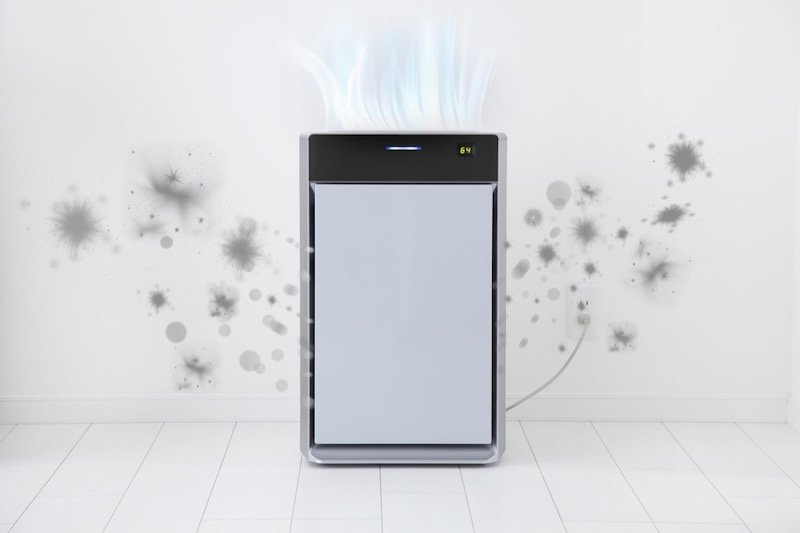
While HEPA vacuum cleaners get rid of fallen dust on the ground, air purifiers clean dust in the air, swirling from one part of the home to the other. Air purifiers work by pulling air from the room into the purifier, and then trapping the particles from the air into the filter.
Many air purifiers have a HEPA filter, which eliminates all but the smallest particles in the home. When purchasing an air filter, compare the type of particles each model is designed to eliminate. Usually, the air filter inside the air purifier must be replaced periodically, or the filter will lose some of its effectiveness. Read the instructions before using your air purifier for the first time.
When purchasing an air purifier for the home, consider the following:
- Noise. Some air purifiers are noisier than others.
- Programmability. Some air purifiers will operate on a timer and turn on or off when needed.
- Remote control. Some air purifiers can be turned on and off remotely.
- Dirt sensor. Models with dirt sensor can tell when it's time to turn on and when it's time to increase speed to eliminate more dirt.
Like the HEPA vacuum cleaner, consumer reviews can help you decide which type of air purifier best meets your needs.
Get a Dehumidifier
Many allergy triggers, such as dust mites, need humid air in order to thrive. In a home with high humidity, a dehumidifier can improve indoor air quality. Most homes are kept naturally dry by their HVAC system. The more the air conditioner and furnace is run, the drier the home will be. However, if your home doesn't have a good HVAC system, you may benefit from a dehumidifier.
Signs You Need a Dehumidifier
You'll know if your home needs a dehumidifier by the following:
- Musty smell in the home.
- Condensation on the walls or windows.
- Mildew or mold on the walls.
- High presence of allergens.
If you suffer from allergies, high humidity could exacerbate your allergies. This occurs because humidity leads to development of mold and dust mites, which can lead to sneezing, itchy eyes and other problems. A healthy home will have less than 50% humidity in the summer, and between 30% and 40% humidity in winter. You can measure your home's humidity with a hygrometer, which can be hung on your walls. If your home's humidity is regularly higher than this, a dehumidifier may be necessary.
You can either purchase a dehumidifier for one room of your house, or you can purchase a whole-home dehumidifier to connect to the home's HVAC system. If you're going to get a whole-home dehumidifier, have it connected by an HVAC professional to ensure it's done properly. When purchasing a portable dehumidifier, read customer reviews to ensure the system you choose is effective.
Improve Pet Care
Pets produce a lot of dust and contribute to household dust by producing allergens. There are many things you can do to improve pet care and thus reduce pet-related dust and dander.
- Bathe your pet regularly.
- Engage in grooming behaviors, such as combing and brushing, outside the house.
- Groom regularly.
- Launder your pet's bedding regularly.
- Clean your pet's food and water bowls on a regular basis.
- Replace your pet's bedding and toys regularly.
If you're sensitive to pet dander, the best pet for you is a "hypoallergenic" animal. Hypoallergenic pets are known to produce less dander and shed less fur. These pets have a less pronounced effect on human allergy symptoms.
Household Sources of Dust and How to Clean Them
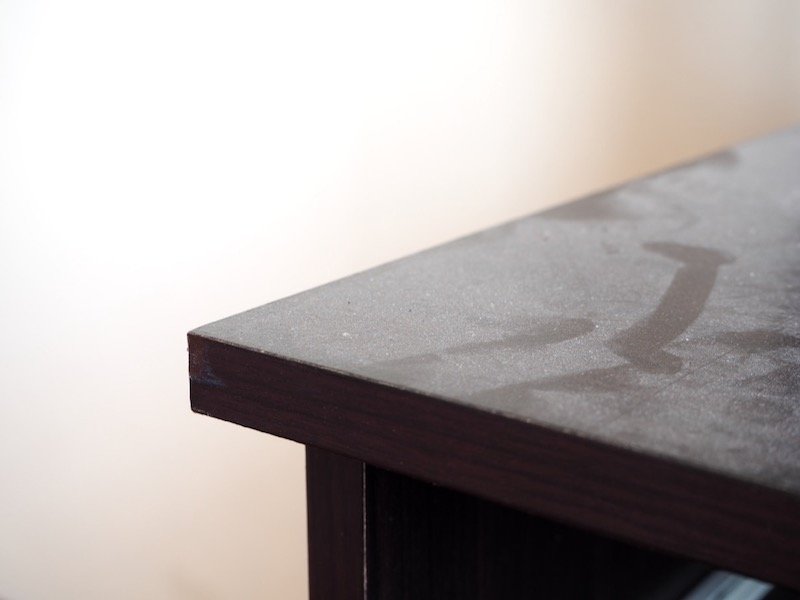
Each part of the house is known to harbor different types of dust. These areas need their own cleaning schedule and have their own proper cleaning method. Knowing the sources of household dust can help you keep your house clean and dust-free.
Blinds and Curtains
Blinds are much easier to clean than curtains. For someone who suffers from allergies or has a sensitivity to dust, blinds are a better product because the dust they gather can be easily eliminated. Blinds and curtains can be made from different materials and thus need different cleaning regimens. Knowing the differences between these two types of window coverings, and how to clean the different materials they can be made from, can help you take care of your home and keep it dust-free.
Weekly Cleaning Regimen
Most blinds and curtains respond well to a weekly cleaning regimen. Use your vacuum attachment to dust your blinds, first when they're tilted down and closed, then when they're tilted upward. Vacuuming your blinds weekly will reduce dust buildup plus increase the amount of time between deeper cleanings.
When vacuuming curtains, set the attachment to a reduced suction setting to prevent the vacuum from drawing the curtains into the attachment. Wrap stockings around the end of the attachment to further prevent this from happening.
Curtains
Read the cleaning recommendations on the curtains. Some fabrics need to be dry cleaned, others can be washed in a delicate cycle in the washing machine. Hang curtains to dry - do not put them in the washing machine.
Wood Blinds
Wood is sensitive to moisture. Use a wood-safe cleaning product or wood oil to remove dust. If you have neither of these cleaning products, you may instead use a lightly dampened microfiber cloth. Wipe down the blinds first when they're in the closed position, then again when they're open.
Damp blinds need to be dried if they're made of real wood. If cleaning faux wood, use a standard dust-removal cleaning product or mixture of water and dish washing soap to clean your blinds. Do not use wood oil on faux wood.
Vinyl Blinds
Dish-washing liquid mixed with water and a damp microfiber cloth can be used to clean your vinyl blinds. However, some homeowners take a more thorough approach by filling a bathtub and submerging the blinds in water. If you do this, use a sponge to wipe down the slats of the blinds. Hang the blinds in your laundry room, on the shower rod or in the backyard to dry.
What to Avoid
Blinds can harbor a lot of dust. Avoid brushing the dust from the blinds without using a cleaning product. Using a feather duster to brush the dust away can lead to airborne dust particles, which can exacerbate allergies.
Electronics
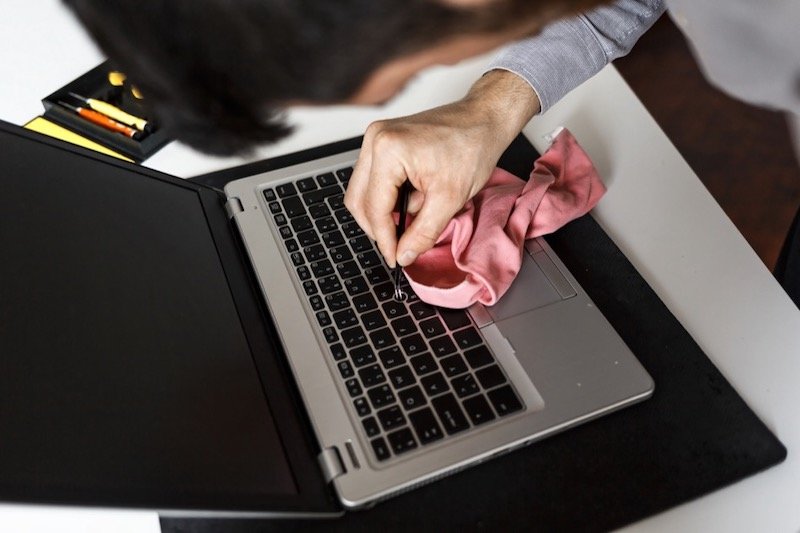
Many types of household products attract dust. Equipment that sits around (stereos, desktop computers, and so on) may collect dust because they're rarely moved. Screens can attract dust through static electricity. Even regularly handled electronics, like cell phones, need to be removed from their covers and cleaned on a weekly basis.
Failure to clean electronics can cause more than just health problems. Electronics need air flow to cool off, or they could be damaged by heat. Dust prevents fans from properly cooling electronics, leading to a shortened service life. In addition, dust can find its way into the devices themselves, causing parts to deteriorate and signals to be crossed.
Standard Dusting Practices
Dust your electronics on a weekly basis with a lightly dampened microfiber cloth, or use dust removing cleaner, if you prefer. Dust around the electronic equipment, the surface of the electronics, and the back of the equipment as well.
Tips
Always read the manufacturer's instructions before cleaning any piece of electronic equipment for the first time. Some products are especially sensitive to moisture and cleaning products. Following manufacturer instructions will prevent you from damaging your equipment.
Avoid using abrasive rags on screens and glassy surfaces, as these materials may cause scratches, which can damage the product or reduce its value.
Static electricity can be a threat when dusting. To avoid damaging your electronic device with static electricity, dampen a microfiber cloth with a dust-preventing cleaning product, then wipe the device dry with a dry microfiber cloth.
Spraying your keyboard to remove dust will release dust into the air around your keyboard. If you have an air purifier in the room when doing this, turn the air purifier on. Watch the area around the keyboard for the next few days after spraying the keyboard with air, and dust in the vicinity if needed.
Ceiling Fans and Light Fixtures
Ceiling fans and light fixtures may harbor years of dust if they're not cleaned regularly. This is especially problematic for ceiling fans, which can disperse dust throughout the room when turned on. Sleeping beneath a dusty but operational ceiling fan can cause you to inhale dust all night long, leaving you congested in the morning.
Light fixtures require gentle handling during cleaning procedures, as cleaning can cause damage. Glass light fixtures may break if dropped. Ceiling fans also need to be cleaned carefully. An unthorough cleaning may dislodge dust without eliminating it, making it even more likely to send dust flying through the air when the device is turned on.
Frequency of Cleaning
Light fixtures need to be cleaned at least twice a year, or more if the fixture is in a room with a ceiling fan. Nearby open windows can blow dirt into the home and may necessitate cleaning the light fixture more frequently.
Make a point of cleaning ceiling fans in the early spring just before the weather turns warm. This way, when you're ready to use ceiling fans in the late spring or early summer, the fan will be ready.
Prep the Area
Before getting started, cover the ground beneath the light fixture with a drop cloth or a light sheet. A light sheet is best because you can shake it outside before laundering it.
Light Fixtures
To clean a dusty light fixture, remove it from the ceiling and put it in a bucket of water. Place several denture tablets in the water with the light fixtures.
Alternative method:
Dunk the light fixture in a bucket of water, then use a melamine foam sponge to wipe dust away.
Ceiling Fans
Cleaning a ceiling fan is easy. If you clean regularly, a pillow case is all you'll need to get rid of the dust. Wrap the fan blade up in the pillow case, then pull the pillow case off the fan blade slowly. The dust will fall into the pillow case. You can clean all the fan blades this way. When you're finished, take the pillow case outside and turn it inside out. Shake the dust out into your yard before washing the pillow case.
Alternative method:
Use a melamine foam sponge to wipe down your ceiling fan if it's greasy or hasn't been cleaned in a long time. This is especially necessary in rooms like the kitchen, where grease will cover most surfaces over time.
Lamp Shades
Vacuum lamp shades on a weekly basis to prevent dust from building up. If the lamp shade becomes stained or dirty, use a slightly damp microfiber cloth to wipe the dirt away.
Tops of Doors, Windows and Cabinets
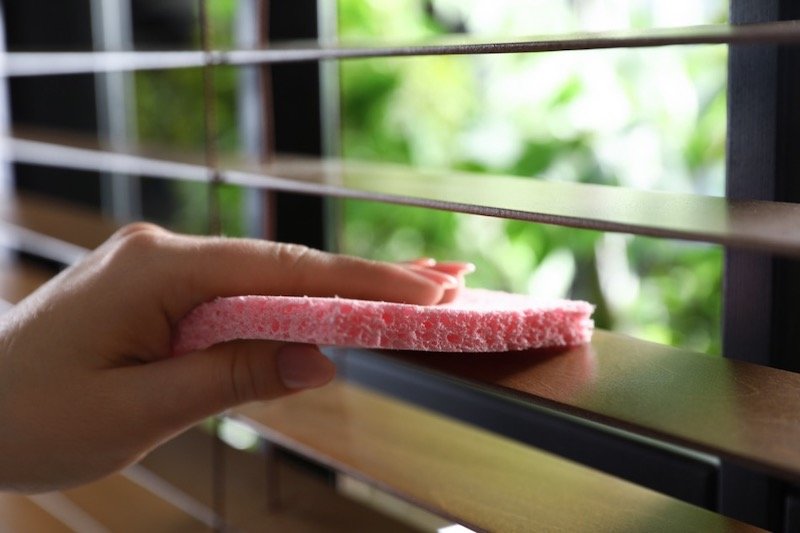
One of the places where dust usually lives is on the tops of doors and cabinets. Hands rarely touch these areas of your cabinets, so a thick layer of dust can build up quickly. Opening and closing doors can cause dust on the cabinets to be disturbed, which perpetuates a cycle of dust flying through the air and landing on the cabinet surfaces. Dusting these parts of your house regularly can improve your indoor air quality and prevent this problem from occuring.
Remove Dust First
The tops of windows and cabinets are difficult-to-reach places. Even if you were able to clean these areas with a vacuum, you would have a hard time knowing if you were cleaning these areas well, or thoroughly, because it's difficult to see.
To remove the dust, use a microfiber cloth dampened with water mixed with detergent, or spray the microfiber cloth with dust cleaner. Swipe the area. While you're doing this, dust will fall onto the floor under the rag. If you're cleaning the cabinets, this may send dust falling onto the counters below. Cover the area with a sheet to protect the counters. When you're done, remove the sheet and shake it outside.
Remove Grease
In the kitchen, grease can build up on cabinets, doors and window trim. Remove the grease to make the surface easier to clean in the future. Use a mixture of half vinegar and half water, or if the grease has built up over a long time, use grease-removing cleaner.
Remove Dust from Cracks
Modern doors are usually flat and hollow, but older doors are made from solid wood and usually have carved surfaces, which can also harbor dust. Take this time to clean any of these carved surfaces.
Painted Surfaces
Water can disturb painted surfaces if the paint is not water-safe. In kitchens, paint on cabinets and doors is usually waterproof and slick, so it's easy to clean. However, some types of paint should not be exposed to water. If you're going to remove dust from a painted door or cabinet, test the paint by rubbing an inconspicuous place with water before rubbing large areas with a damp rag. If the paint is not shiny, do not use any cleaning product, except water to clean the area.
Upholstery
Upholstery can be especially tricky because its cracks and crevices can hide a lot of dirt and dust. Cleaning upholstery regularly is important. Dust can easily settle on the backs of your sofa or chair, only to be re-released into the room.
Most types of upholstery can be safely cleaned with a vacuum, but if you're cleaning an antique or very delicate piece, check with a professional before cleaning the upholstery yourself.
Clean Regularly
Upholstery should be cleaned every time you vacuum, although not every part of the couch or other chairs need to be cleaned every single time. The backs of chairs in particular can gather dust easily, and these parts should be cleaned every time.
Vacuum First
Use a vacuum cleaner attachment to clean your chairs, sofas and other upholstered surfaces. Start the attachment at the top of the chair or otherwise upholstered surface, then move from left to right, overlapping the strokes of the vacuum as you go. Focus on the parts of each chair that can easily gather dust, like the spaces between cushions and the parts near buttons.
Clean With a Damp Cloth
At times, upholstery can get so dusty, it needs to be cleaned with a cloth. Use a microfiber cloth dampened with a little water (or, if the upholstery seems especially dirty, mix a little water with dish soap) to pick up the dust off the surface of the upholstery. When you're done, use a dry cloth to dry the upholstery, then wait until the upholstery is fully dry before using it.
Tips:
- Not all types of upholstery can be cleaned with water; read the tags on the upholstery before dampening with water.
- When cleaning upholstery with a damp cloth, brush it in small sections. Be gentle to avoid damaging the fabric.
- Only a little water is needed. Don't soak the fabric.
Baseboards and Carpeting
Carpeting can harbor dust, which becomes trapped in its pile. Static electricity and the density of the pile can hold the dust in place for a long time. Deep clean your carpeting and the baseboards around the carpeting to remove the dust.
Clean Regularly
Regular light cleaning of your carpeting can prolong the time between deep cleanings. Vacuum your carpeting weekly. Doing this, a deep cleaning should only be necessary every three to six months.
You get to decide how often you want to clean your carpeting. To make an informed decision, pay attention to your allergy symptoms and the dust in your home. The more dust your indoor air seems to hold, the more dust you'll want to remove from your carpeting.
Vacuum First
Before beginning the deep-cleaning procedure, clean any clutter on your floors and vacuum thoroughly. Pay close attention to the corners and edges of the room, as well as under furniture, as this is where the most dust can be found.
Rake
Use a carpet rake to agitate your carpet. Some carpet rakes are designed to remove some types of dander, like pet hair. If you own a pet, use a carpet rake specifically for pet owners. Note: raking the carpet may not be an option if you have a closed-loop carpet like Berber. Read the manufacturer's instructions before using the carpet rake on your carpet.
Wash
After agitating, use a clean white cloth dampened with hot water to lightly scrub any dusty or dirty parts of the carpet. Wash down the baseboards while you're there. If your carpet is especially dusty, use carpet cleaner or a combination of half vinegar and half warm water.
Test any carpet cleaner on a hidden area of carpeting before using it, as some types of carpet may become discolored by cleaning products. Allow the carpet to dry fully before walking on the carpet.
Vacuum
After the carpeting has been washed, vacuum it one more time to remove any dust that may have become dislodged during the cleaning process.
Other Helpful Dusting Tips and Resources
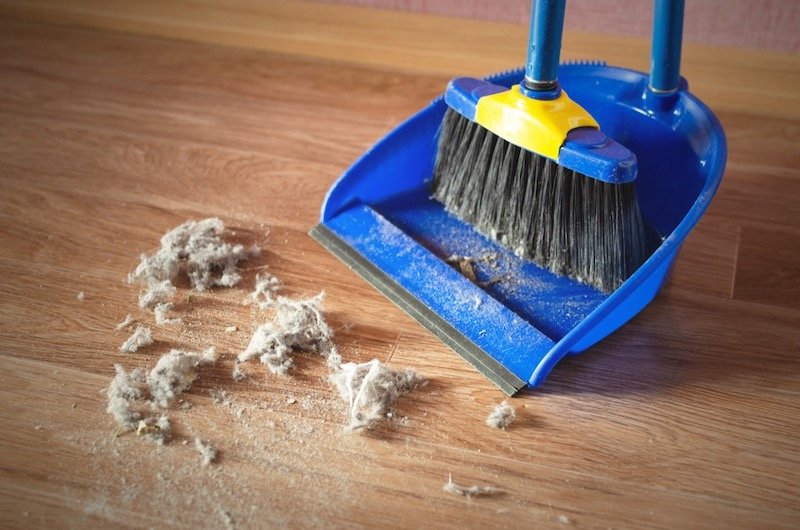
Using best practices when dusting and cleaning your home can improve your home's indoor air quality while protecting your home's horizontal surfaces from dust. Following these tips on a regular basis, you'll get in the habit of keeping your home cleaner and in better condition overall.
Do's and Don'ts
- Do wear a dust mask when dusting, especially if you suffer from allergies.
- Do suit up in long clothing and gloves when you clean to avoid covering your body in dust, which you will then re-distribute throughout the home.
- Do keep your windows closed to prevent dust from outside your home from entering the house, especially at times of the year when allergens float through the air.
- Do keep your shoes outside to avoid bringing dust and dirt into the house.
- Do use interior and exterior door mats at each entrance of the home, to collect dust from your shoes.
- Do clean these door mats regularly.
- Do use a damp cloth to dust.
- Do change and wash bedding on a weekly basis.
- Do start a dusting and cleaning routine to remove dust on a daily or weekly basis.
- Do use allergen-proof covers to protect your bedding.
- Do clean your hardwood or tile floors regularly with a microfiber mop, which uses static electricity to pick up dust.
- Do consider replacing your carpeting with hardwood floors, if you have allergies.
- Don't use a feather duster or another form of dry cloth to dust surfaces in your home.
- Don't install rugs or carpeting, especially if you are sensitive to dust and pollen.
- Don't remove dust yourself if your allergies are severe; get help from someone and leave the house while cleaning is taking place.
Dust from High to Low
Starting from the highest point in your home, you'll send dust fluttering to the ground. By the time you're cleaning your floors, much of the dust found near the ceiling and high shelves will be down below where you can remove it.
Change Your Vacuum Filters and Bags Frequently
With all this dust removal, you'll be making good use of your vacuum cleaner. Keep your vacuum functioning properly by changing or cleaning filters regularly, according to the manufacturer's instructions. The vacuum dust chamber must be cleaned out regularly. Check the dust chamber every few weeks or so, and empty it as needed.
Look for Dust in Unusual Places
Dust settles everywhere, and some of those places may not be addressed in this tutorial. Every house is different. As you're cleaning your home, look for other places where dust might fall, and clean in those areas. This can include around toys, holiday decorations, the tops of picture frames, behind shelves and pieces of furniture, and underneath regular fixtures in your home.
Spread the Responsibility
Dusting can become a burden if it all falls to one person. Ask other people in your home to take responsibility for cleaning their own bedrooms and bathrooms. Make a chart and outline when everyone is responsible for cleaning their portion of the house. Make tools available to everyone so they can dust properly when the time comes. Teach people the proper way to remove dust so they're not just spreading it around.
Resources
- https://www.mayoclinic.org/diseases-conditions/dust-mites/symptoms-causes/syc-20352173
- https://acaai.org/allergies/types/dust-allergy
- https://www.aafa.org/dust-mite-allergy/
- https://www.webmd.com/allergies/dust-allergies
- https://www.consumerreports.org/cleaning/best-dusting-tools-for-spring-cleaning/
Practice and Strive for Continuous Improvement
It's impossible to completely eliminate dust from your home, but you can get into a routine that makes dusting easier and more effective. Try different methods around your house until you find less dust in your house. But how can you tell if there's less dust in your home?
Watch for dust to build up on surfaces not often used. These surfaces are a good measure of the amount of dust in your home.
Pay attention to your allergies. Watch for improvement. Notice when your allergies are more severe and when they're better, and try to draw connections between your allergy responses and your cleaning habits.
Experiment with different products like air filters. Use different products in different parts of the home, and monitor progress in each room.
Over time, your home will become a less dusty and cleaner place to spend time. You can help improve your quality of life, and the quality of life of others in your household. With effort, you might be able to curb your allergy responses indoors, turning your home into the haven it's meant to be. Whatever you are allergic to, it’s worth trying HayMax organic allergen barrier balms which trap airborne allergens before they get in the body.
If you're staging your home for sale it will certainly pay off to have a dust-free home!
